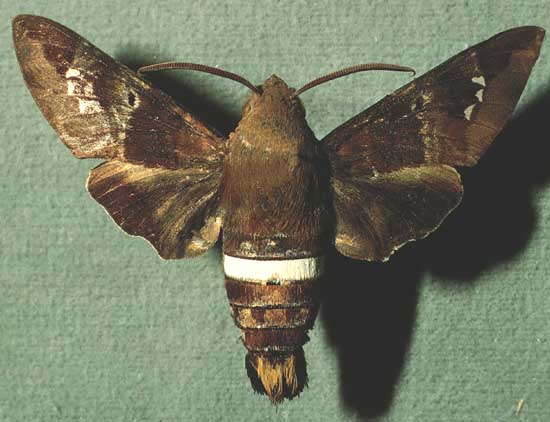
Aellopos clavipes clavipes male, Costa Rica, courtesy of Dan Janzen.
This site has been created by Bill Oehlke.
Comments, suggestions and/or additional information are welcomed by Bill.
TAXONOMY:
Family: Sphingidae, Latreille, 1802 |
|
|
Created as per BOLD list, March 30, 2022 |
Jordan, 1924

This site has been created by Bill Oehlke.
Comments, suggestions and/or additional information are welcomed by Bill.
TAXONOMY:
Family: Sphingidae, Latreille, 1802 |
Sesia eumelas Jordan 1924, is a synonym for clavipes. I am not sure if eumelas is treated now as a synonym or if it has its own subspecies status.
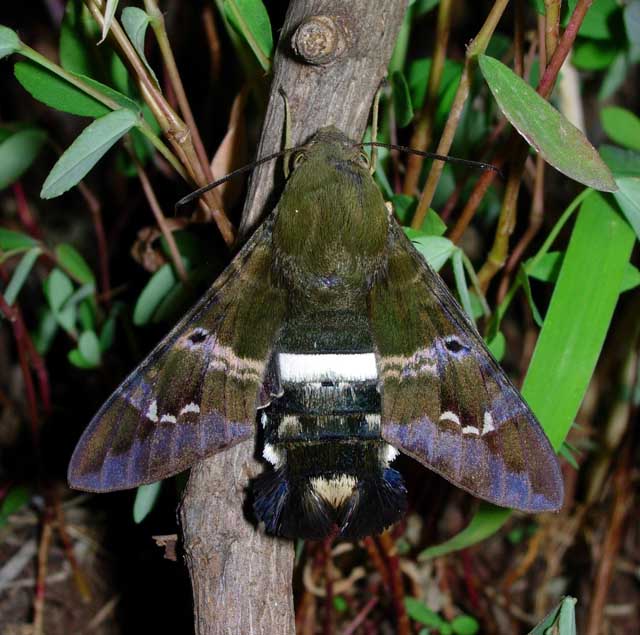
Aellopos clavipes clavipes, Playa del Carmen, Quintana Roo, Mexico,
courtesy of Ben Trott.
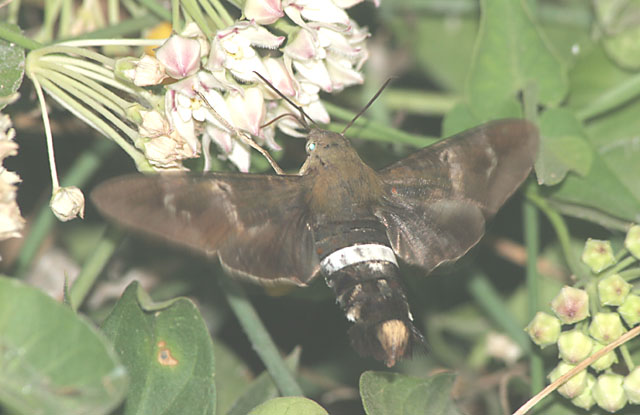
Aellopos clavipes clavipes, Hidalgo County, Texas, August 28, 2006, courtesy of Gil Quintanilla
In Texas the flight is in August and October. Adults nectar on flowers.
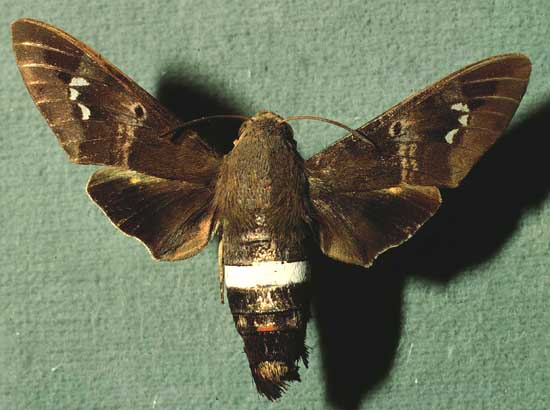
Aellopos clavipes clavipes female courtesy of Dan Janzen.
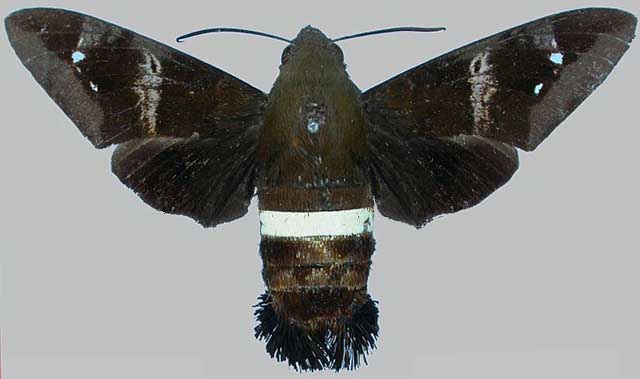
** Aellopos clavipes eumelas ** female, Malvern, Jamaica,
courtesy of Ian Kitching
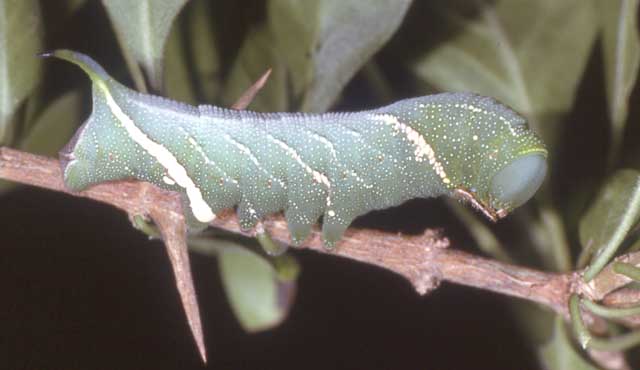
Aellopos clavipes clavipes fifth instar, copyright/courtesy of James P. Tuttle.
J.F. Doyle, writes, This species "probably uses Buttonbush, Cephalanthus occidentalis, a Rubiaceae, as a larval foodplant. It occurs along the Medina River, very close to Castroville, Texas. Reported to use other plants in that family in the Rio Grande Valley, i.e. Randia rhagocarpa. A. clavipes is more common there. I have learned that it has been recorded previously from this county and I will let you know the details on that as soon as I can."Image sent by Terry Doyle, October 9, 2006. |
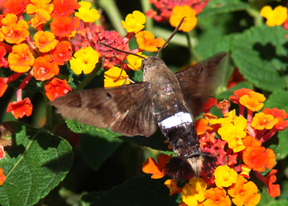
|
Caterpillars pupate in shallow underground chambers.
Ben Trott provides the following images and writes, "Although its foodplant Randia rhagocarpa is found everywhere, this is an elusive species. I have seen adults buzzing around in the early evening, and one female trying to lay eggs, I searched the bush afterwards, but no eggs were to be seen. The evidence of the larvae is common to find (old frass, stripped shrubs), but I have only found one so far."
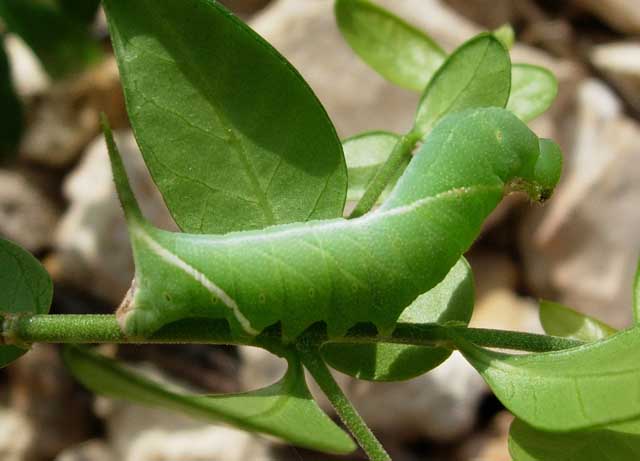
Aellopos clavipes clavipes fourth instar, Playa del Carmen, Quintana Roo, Mexico,
courtesy of Ben Trott.
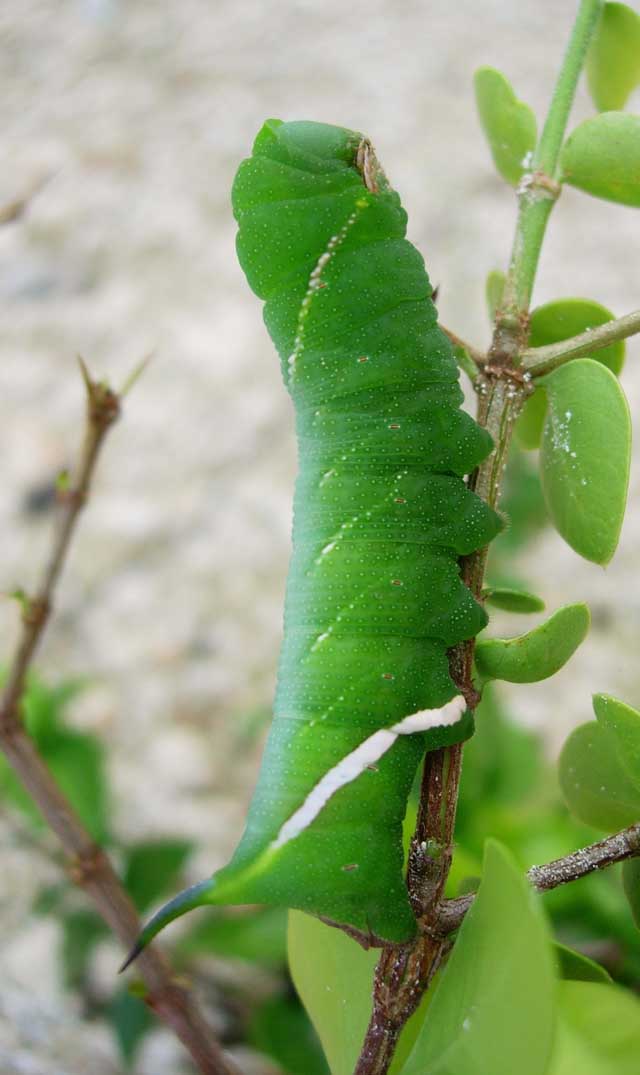
Aellopos clavipes clavipes fifth instar, Playa del Carmen, Quintana Roo, Mexico,
courtesy of Ben Trott.
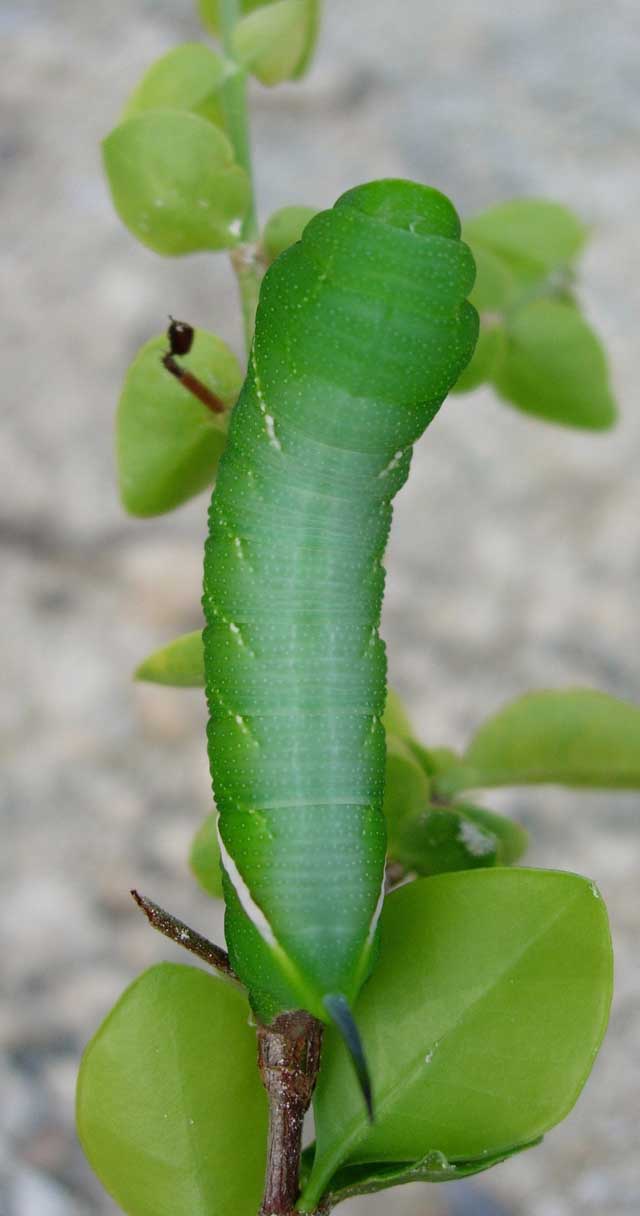
Aellopos clavipes clavipes fifth instar, Playa del Carmen, Quintana Roo, Mexico,
courtesy of Ben Trott.
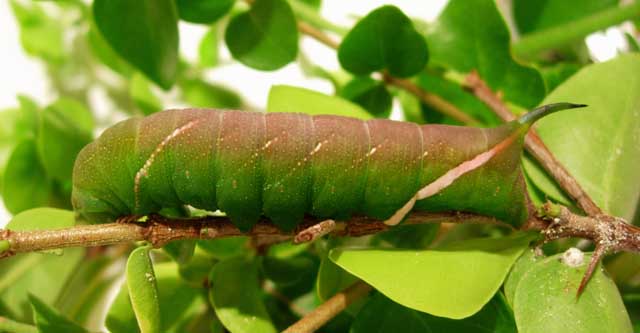
Aellopos clavipes clavipes prepupal fifth instar, Playa del Carmen, Quintana Roo, Mexico,
courtesy of Ben Trott.
Ben Trott writes, "I'm sending photos of Aellopos clavipes's complete life-cycle. Females tend to fly during late afternoon and lay their eggs on Randia species. They can be seen again at dusk with the males nectaring from plants such as Lantana camara. Whilst out searching, I have seen eggs being laid, and I collected a few. As I've reared this species from eggs, I discovered that the larvae pass through seven instars. This is the first time I've seen this in any Sphingidae larvae. As a result, instars are short and only last a couple of days at most. I also noticed that in the last instar the larva uses an interesting defense mechanism. It rears its head back, inflates the top of its prolegs to create false eyes & face, which must deter predators.
"An egg laid on the 28th Nov. took three days to hatch. I reared the larva which pupated by the 10th December which hatched as an adult male on the 26th December."

Aellopos clavipes clavipes
fifth instar, Sonora, Mexico,
July 2014, courtesy of Jean Haxaire.
Use your browser "Back" button to return to the previous page.
This page is brought to you by Bill Oehlke and the WLSS. Pages are on space rented from Bizland. If you would like to become a "Patron of the Sphingidae Site", contact Bill.
Please send sightings/images to Bill. I will do my best to respond to requests for identification help.